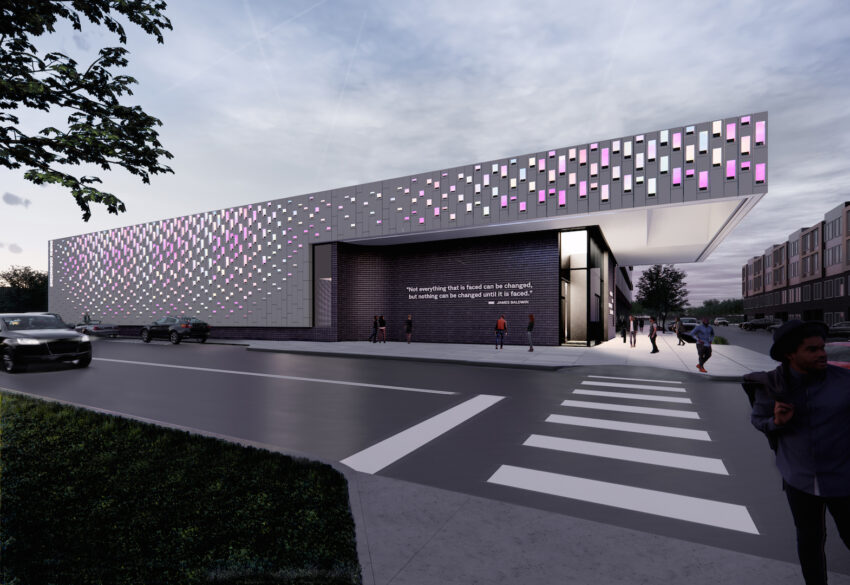
Tulsa Oklahoma Reconciles its Sordid Past with Greenwood Rising
By Beth Reiber
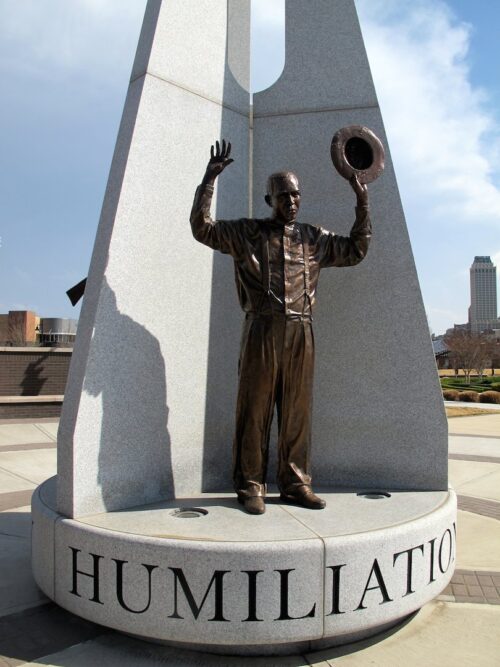
If you attended school in the 20th century, chances are you never learned about the Tulsa Race Massacre.
I certainly didn’t, nor was the horrific event on my radar in 1995, when I passed through Tulsa covering sights on Oklahoma’s Route 66 for a guidebook.
I selected Tulsa’s two most famous attractions, the Philbrook Museum of Art and the Gilcrease Museum, and called it good.
It was only later, on an extended visit to Tulsa in 2014, that I learned about what was then called the Tulsa Race Riot, one of the worst—if not the worst—instances of racial violence in U.S. history.
Today, most people agree the tragedy should more accurately be called the Tulsa Race Massacre. It only took a century for us to get there.
Tulsa Race Massacre Centennial
2021 marks the 100-year anniversary of the Tulsa Race Massacre, commemorated with events throughout Tulsa and the former Black community of Greenwood from late May through summer 2021.
They include art exhibits, an Ironman competition, symposiums, a candlelight vigil, performances, a Juneteenth Festival, and more.
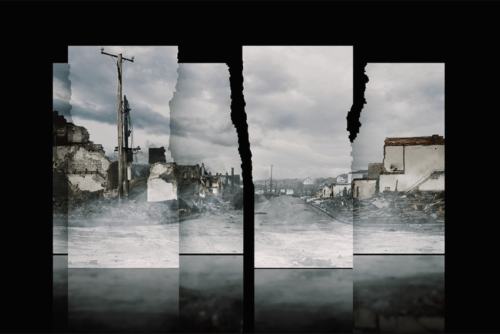
More importantly, in conjunction with the centennial are a couple of new Greenwood attractions that will tell the story of the Tulsa Race Massacre for generations to come, none more impressive than Greenwood Rising, a state-of-the-art history center.
In fact, I wouldn’t be surprised if Tulsa becomes one of the nation’s top destinations for visitors wishing to learn more about race inequity and reconciliation.
Of course, Oklahoma’s second-largest city with a population of about 400,000 offers many other diversions as well, including museums, art deco and Route 66 structures galore, and many activities geared toward families.
Tulsa Race Massacre and Greenwood Rising
In 1921, Greenwood thrived from Oklahoma’s oil boom just like many towns across the state, but because of the state’s segregation laws, Greenwood was an all-black Black community just minutes from downtown Tulsa. Its 11,000 residents supported two newspapers, grocery stores, movie houses, drug stores, public schools, a library, post office, churches, hotels, banks, restaurants, barbershops, beauty parlors, flower shops, women’s clubs, and offices for doctors, dentists, lawyers, realtors, and entrepreneurs.
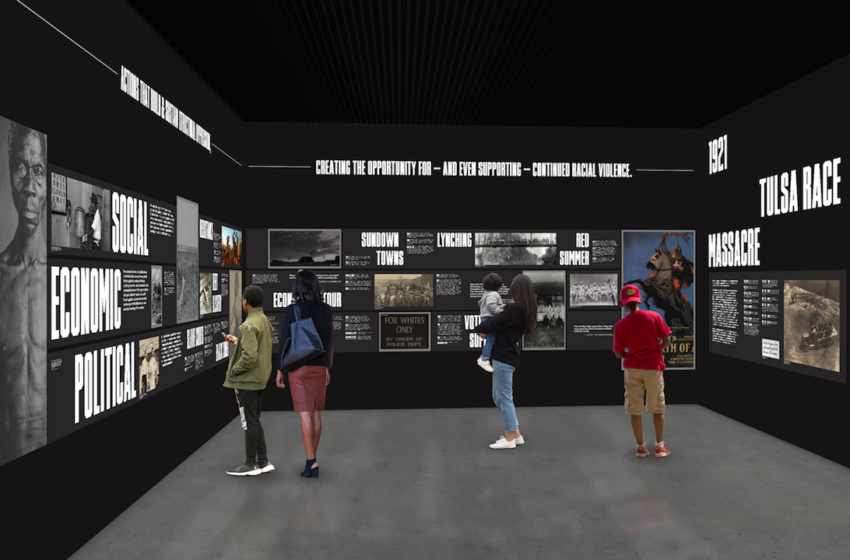
It was one of the country’s wealthiest Black neighborhoods, so prosperous that educator Booker T. Washington called it the “Black Wall Street of America.”
In contrast to the persecution and lynching that plagued the Jim Crow South, Greenwood was a place where Blacks could feel safe and flourish.
But on May 31, 1921, after a Black teenager was accused of molesting a white teenage elevator operator, a white mob gathered outside the courthouse where he was being held, inflamed by an article in the Tulsa Tribune that claimed the girl had been assaulted.

Talk of a lynching brought armed Blacks, many of them World War I veterans, to defend him.
A confrontation ensued, and by evening a white mob descended on Greenwood, propelled by rumor, envy and hate. They looted, killed, and set fire to everything in sight.
Thirty-five Greenwood blocks were destroyed, including 1,256 homes and most of the community’s businesses and churches.
Reports of those killed ranged from 39 to 300, though ongoing excavations of unmarked mass graves now support the higher count. Thousands were left homeless.
Although Greenwood rebuilt and rebounded, with more than 100 Black-owned businesses than existed before the massacre, integration eventually killed the community.
Add to that what happened to many Black neighborhoods across America–the construction of an expressway (ironically called the M.L. King Memorial Expressway) right through Greenwood.
Greenwood Today

Although Greenwood is a shadow of its former bustling self, a number of memorials and museums recall its golden years as the Black Wall Street of America and the deadly race massacre, many erected by survivors and their descendants.
The heart of the community is still Greenwood Avenue and its intersection with Archer Street, with brick buildings dating from the 1920s and 1930s.
The Greenwood Cultural Center, where I first learned about the race massacre, has long served as the epicenter for Tulsa’s African-American heritage, with cultural programs and displays of memorabilia and photographs that tell the story of Greenwood’s Black trailblazers, entrepreneurs, professionals and other residents before and after the massacre.

Black Wall Street Memorial
Nearby is the Black Wall Street Memorial, dedicated during the 75th anniversary of the Tulsa Race Massacre and listing names of hundreds of Black-owned businesses once housed in Greenwood, as well as the Mabel B. Little Heritage House, which demonstrates how well off many Greenwood families were.
Now a museum with antique furnishings, the two-story brick home was built in 1926 by Sam and Lucy Mackey after their white-frame house was destroyed in the massacre, an interesting commentary on the fact that though the couple worked as domestic servants for prominent Tulsans, they were able to secure a comfortable lifestyle.
Greenwood Rising
But it’s Greenwood Rising that is turning heads. Opening on July 3, it offers an immersive, integrative journey utilizing projection mapping, holographic effects and environmental media to tell the story of Black Wall Street before and after the Tulsa Race Massacre.

After viewing a short film introducing Greenwood as a wealthy Black community and the racial violence it endured, visitors learn about Greenwood’s early years, including the entrepreneurs who put Black Wall Street on the map.
High-tech displays include a period barbershop, where holographic barbers talk about their dreams and lives.
The next section, called the Arc of Oppression, explains how national and local political, economic and social injustice contributed to the massacre, provides a chronology of the Race Massacre, gives voice to survivors and their descendants with recorded memories, and tells of Greenwood’s rebuilding.
Recognizing that some of the visuals in this section, such as slave shackles, a KKK white robe, and graphic displays, might trigger racial trauma in some visitors, the museum offers an “emotional exit” path that bypasses the more traumatic sections but still provides key historical information.
The museum ends at the Journey toward Reconciliation, where visitors are asked to come together, think about restorative justice and make personal and actionable commitments toward racial reconciliation.

For those just learning about the Tulsa Race Massacre, this museum is powerful indeed, especially if it leads to thoughts of how you might have coped with such terror and loss.
To digest what you’ve seen and learned, take a contemplative stroll on The Pathway to Hope, a pedestrian pathway that terminates at John Hope Franklin Reconciliation Park.
Statues and Signboards
The park, completed in 2009, uses statues and signboards to provide a visual story of the role Blacks played in Oklahoma’s development, a story not usually included in history books.
More Tulsa Attractions=
Tulsa owes its wealth of Art Deco buildings to the oil boom of the early 20th century, including the Mayo Hotel, which hosted such notables as Charles Lindbergh and Elvis Presley and was for many years the home of financier J. Paul Getty.

The Tulsa Union Depot and 320 South Boston building are other period gems. Iconic Route 66 landmarks also abound, including classic gas stations, motels, neon signs, and diners.
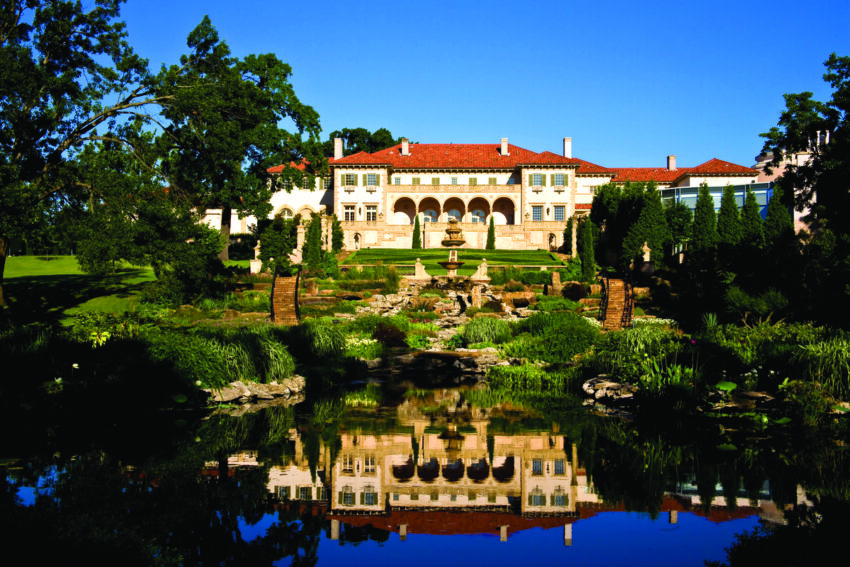
But Tulsa’s most well-known attraction is undoubtedly the Philbrook Museum of Art, an impressive, 72-room Italian Renaissance villa built by oilman Waite Phillips in 1927 and donated in 1938 to Tulsa as the city’s first
art museum. It houses Italian Renaissance paintings and sculptures, 19th- and 20th-century American and European paintings, and Native American, African, and Asian art, while 25 acres of formal and informal gardens extend from the rear of the villa.
As for the Gilcrease Museum, it’s closing July 4 for construction of a new building on the same site, meaning you’ll have to wait at least three years to see one of the country’s finest and most comprehensive collections of American West art.
Tulsa’s Vibrant Music Scene
Take solace in Tulsa’s vibrant music scene, which includes famous venues like Cain’s Ballroom, open since the 1930s. Tulsa augments its music reputation with the Woodie Guthrie Center, which serves as an archive for this Oklahoma-born musician who wrote more than 3,000 songs, few of which were recorded.
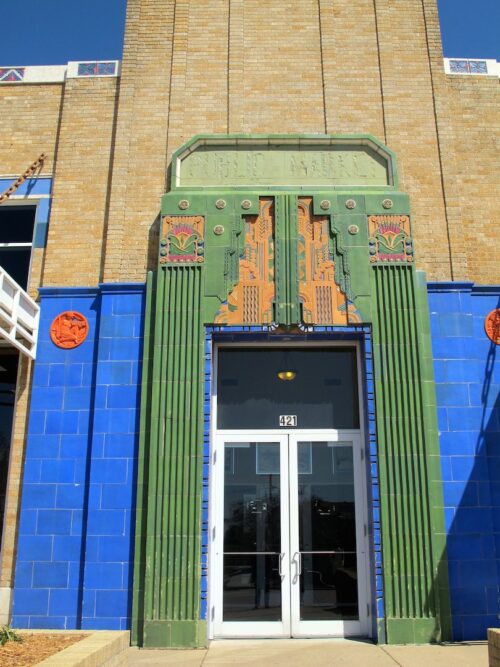
After a 15-minute introductory film, visitors can listen to his music, learn about the role the Dust Bowl played in his ballads, and view personal effects from musical instruments to his original handwritten lyrics of “This Land is Your Land,” which in my opinion should be our national anthem.
Bob Dylan Center in Tulsa
Remarkably, in 2022 Tulsa will also become home to the Bob Dylan Center, which will exhibit handwritten manuscripts, notebooks, memorabilia, personal documents, films, photographs, musical instruments, unreleased studio and concert recordings, and more from his extensive archive.
Tulsa for Families
For kids, there’s the Oklahoma Aquarium with the world’s largest exhibition of bull sharks, loggerhead turtles, and a new jellyfish exhibit, while the Tulsa Zoo, which has been entertaining families for 90 years, houses 400 species, including rare and endangered species.
The new kid on the block is the imaginative Gathering Place, a 100-acre riverside park with trails, gardens, and fantasy-provoking playgrounds that include towers, climbing structures, suspension bridges, slides and water features. I wish there were parks like this when I was a kid. Read a GoNOMAD story about the Gathering Place in Tulsa.
Hope for the Future
So while Tulsa has always offered attractions that have withstood the test of time, it has also evolved, adding new sites and concepts that have changed the city’s conversation, most notably in Greenwood. I remember a comment I heard at the Greenwood Cultural Center seven years ago that I’ll never forget, from a woman who lamented that the real tragedy of the Tulsa Race Massacre–beyond the obvious loss of life and the long, dark secret it became–was the physical erasure of Greenwood itself.
Sure, its resilient residents rebuilt, but when you lose a sense of place and can never go back, she said, you lose a community’s memory. In a small but significant way, Greenwood’s museums and memorials are helping to restore that sense of community. At the very least, it’s helping us to see where we were, where we are, and where we need to go from here.
- The Land of Lorca in Granada, Spain - August 24, 2023
- Colombia’s Fantastic and Wild Amazon - January 14, 2023
- Greenwood Rising: Tulsa’s Black Wall St. Memorial - May 27, 2021


